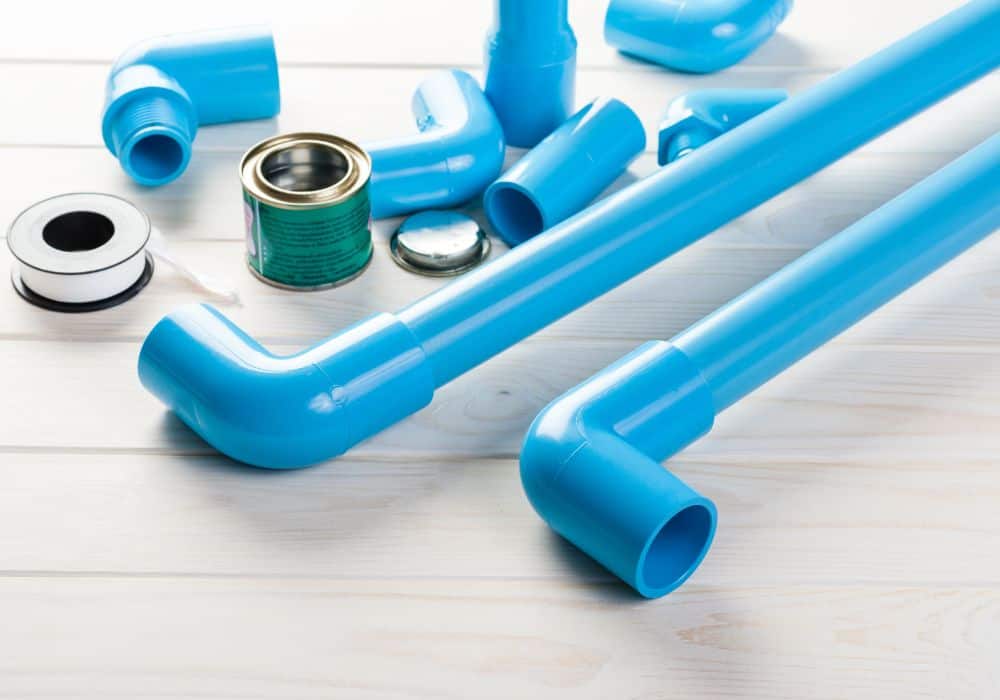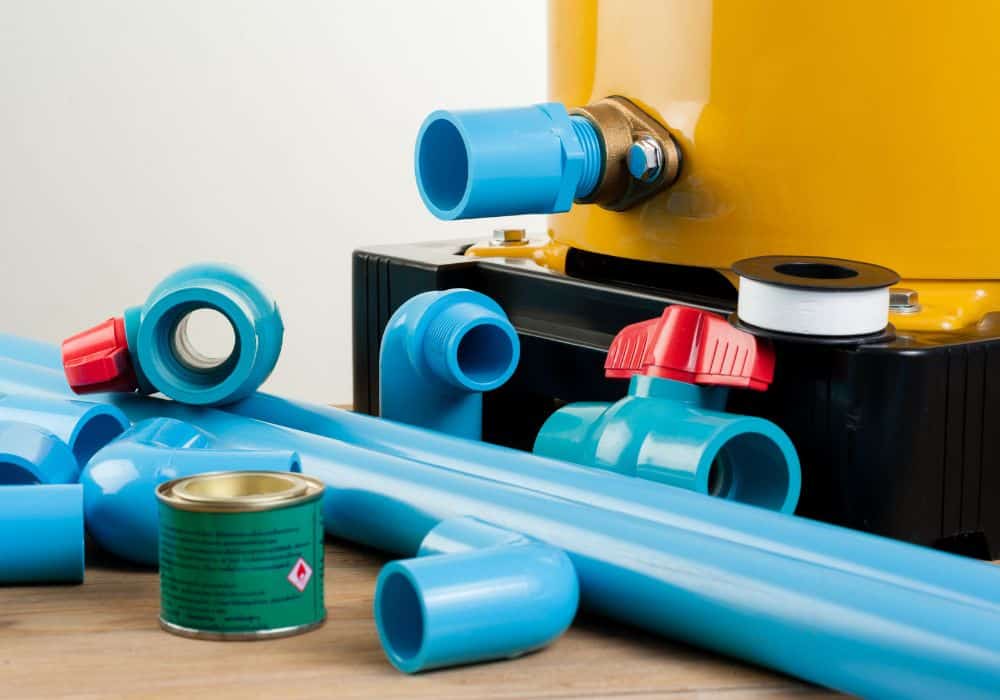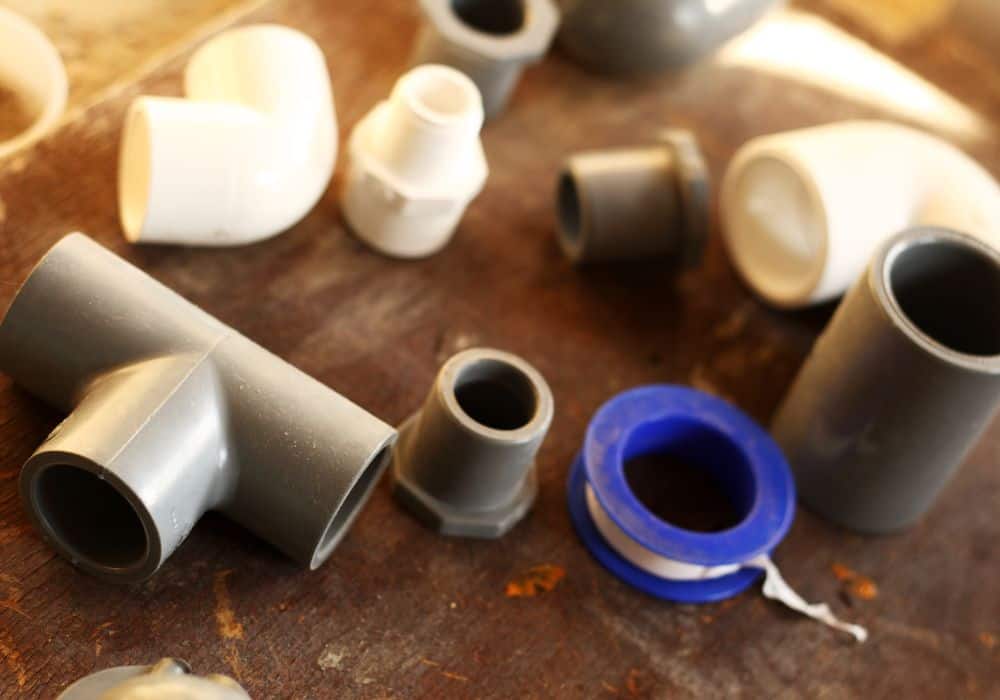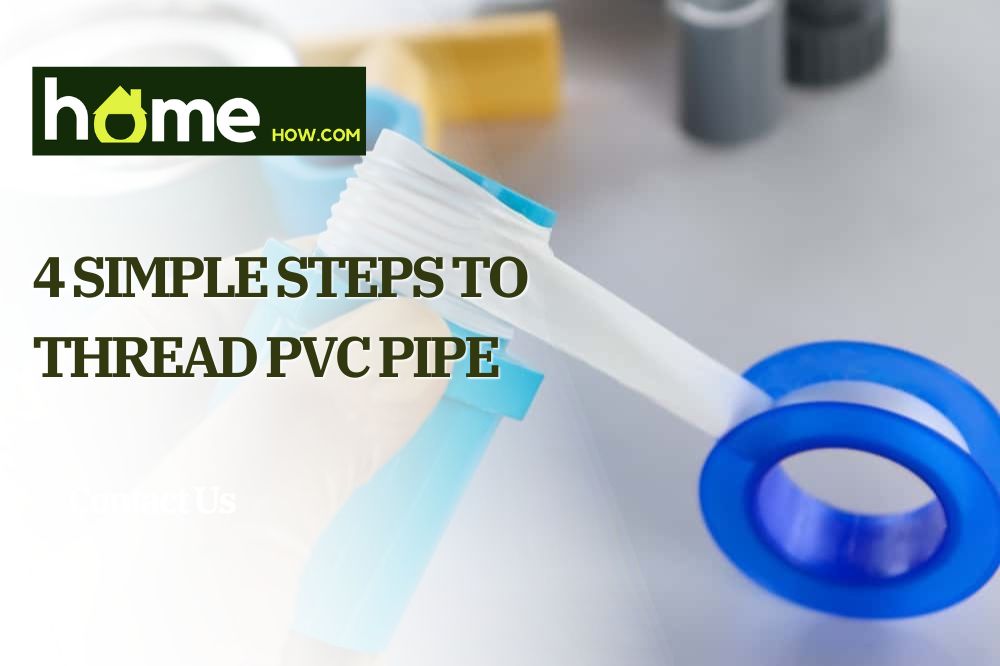Are you worried about your irrigation system pipes getting damaged? To avoid unnecessary headaches, then you should consider threading the potential points of leakage.
Threading is the process of joining one pipe end to another, particularly with the use of a schedule 80 or 120 material. If you’re thinking of doing this project on your own, then make sure to follow this guide on how to thread PVC pipe.
Tools Needed
- Vise
- Tapered arbor/shank
- Threading die made for plastic pipes, compatible with a pipe diameter of 1 inch
- Diecast
- One-inch PVC pipe with schedule 80/120 wall thickness
- Wooden plug
- Ratchet pipe cutter
- Rag
- Bucket
You can also use a pipe threading kit, which contains most of the components stated above.
How to Thread PVC Pipe?

Threading a PVC joint assembly may be done in 4 easy steps:
1. Secure
First, wrap a rag around the pipe part that will come in contact with the clamp. This will help protect this part from breakage.
Next, put the pipe in the vise. See to it that the end due for threading is 6 to 8 inches away from the clamp.
Clamp the pipe but don’t overdo it. You will end up breaking it, which means you will need to buy a new one.
Pro tip: You can also place a wooden plug into the pipe. This will help prevent the distortion of the walls of the female schedule.
2. Prepare
Put the tapered arbor inside the PVC pipe. This will help maintain balance and stability. The arbor will also keep the manual threader centered, apart from protecting the pipe sides from cracking.
Pro tip: It will help to put a bucket under the end of the pipe. This will catch the mess that goes with threading, thus making cleanup easier.
3. Thread
Place the threader inside the pipe. Put the smooth wall of a plastic part first, so that the threads are facing away from the pipe.
Start the thread die. You can use a diestock with guides, as this will make sure that the die is square to the pipe axis. Do remember to remove the parts of the guides that may end up damaging the pipes.
Turn the cutter clockwise. Make sure the push the die end as you engage the pipe. This will ensure that each successive thread is even.
Rotate the die’s long handle to continue threading.
Run the threaded portion onto the pipe. Stop once the die is in line with the pipe end.
Pro tip: Don’t use your plastic pipe dies to cut another type of material.
4. Clean up
Turn the die counterclockwise to remove it. Remove the pipe from the vise.
Don’t forget to wipe the threads with a rag. As for the die, keep it clean and sharp for future use.
How to Assemble Threaded PVC Pipes?

Now that you’re done threading your PVC pipe, then you may want to proceed with assembling the threaded fittings. The materials you need for this project are as follows:
- Teflon tape or sealant
- Strap wrench/crescent wrench
Once you have these at hand, you can proceed with the following steps:
1. Lubricate the Joint
To make sure that the plastic fitting adjoins well, you will need to lubricate the joint. This will prevent fluids from leaking out.
When affixing threaded PVC pipes, you may use any of these two components:
- Using Sealant
Apply the sealant evenly to the male PVC fittings. Fill the threads, but don’t apply too much (as is the tendency of most installers.) You don’t want the excess sealant to clog up some of the pipe components.
Remember: always make sure to use the right sealant. See to it that it contains a non-hardening compound. This will provide a true sealing function because they don’t harden on the spot.
Instead, they are pushed to the areas where leaks may occur due to high water pressure.
- Using Teflon Tape
Although some argue that sealant is better than Teflon tape, you can use it when assembling socket fittings.
According to this video, the best material to use for this project is white PTFE tape. Dimension-wise, the recommended thickness of tape should be 3 mils. As for the width, it should depend on the size of the fitting.
When applying Teflon tape, first make sure that the threads are clean.
Next, hold the fitting in one hand and align the edge of the tape over the threads. Press the end of the tape with your thumb. Roll the tape around the fitting in a clockwise direction. Apply enough force to slightly stretch out the tape, but not tear through it.
Remember: 2 or 3 rotations should be enough!
Pro tip: Make sure that the tape covers the first thread, but not the edge of the fitting.
2. Secure the Threaded Joint
After coating the fittings with either tape or the proper sealant, it’s time to affix them together.
That said, it’s important that you just finger-tighten them.
You can add one or two turns, but that’s it with the use of a strap or crescent wrench. Don’t use a wrench that may damage the pipe, and don’t perform additional turns as it will affect the tensile strength of one-inch PVC.
As to why the latter happens, it boils down to the difference between a plastic male fitting and a female fitting.
Male threads have a bigger diameter, while the female part has smaller diameter fittings. This amount of taper ensures that they connect well together.
Since the size of the pipe decreases in a female adapter, that means the resistance of the PVC in this part is lower too. The strain of the male thread can lead to high tensile stress levels, thus making the female head more prone to cracking.
To make matters worse, since you have applied sealant or tape prior, you add some form of lubrication to the fitting. The aid of such lubricants may cause you to apply more torque – which is another reason why you may end up over-tightening it.
Pro tip 1: Don’t back the fittings out once you’ve turned them in. Doing so may damage the threads and cause more leaks in the long run. That’s why you need to be sure (if not accurate) when joining elbow fittings together.
Pro tip 2: If you’re connecting the PVC nipples to an irrigation system, make sure to check the pipe manufacturer’s instructions. It may only require a half or full-finger turn to tighten the connection.

FAQs
Why should you thread PVC pipes?
Threading can help prevent damage along miles of plastic piping. This is especially important for pipes that are subject to higher pressure ratings (100 pounds per square inch/PSI or more.)
Because threaded connections make pipes durable and leak-proof, they are best used in sprinklers and other related hose plumbing projects.
What causes a threaded PVC connection to fail?
Although a threaded PVC joint schedule will help prevent a leak path, they may still occur due to the following reasons:
- Over-tightening. Turning the fitting more than one or two times will cause the female threads to stretch. The stress of the system pressure may affect the tensile strength of PVC. As a result, the sharp edges of the threads will break.
- Applying the wrong sealing compound. Some products contain oils and solvents that may damage the plastic.
How do you find the right sealant for threaded PVC pipes?
First, you need to check and evaluate the brands of pipe sealant. See to it that the sealant is compatible with PVC pipes. If it’s designed for a metal pipe, it won’t seal the plastic threads appropriately.
Can I use Teflon paste or pipe dope on threaded PVC pipes?
No, for they’re better suited for metal pipes – not plastic ones.
While both are quality materials, they can make the joints slippery. Such may lead you to over-tighten the pipes, which could then lead to a leaky connection.
Can I use schedule 80 fittings with a schedule 40 system?
No. If you’re using a schedule 80, then you should thread with the same pipe fitting. The same goes for a schedule 40 pipe.
Using incompatible fittings can lead to over-tightening. Just because it’s schedule 80 doesn’t mean you need to tighten it more. Although its walls are thicker, the strain levels and resistance of PVC remain the same.
Fun fact: According to this article, inserting one thread of nipple into an incompatible system will end up reducing its efficiency by as much as 50%. This will make the system weaker, so keep your fittings compatible!
Conclusion
To thread a PVC pipe, you first need to clamp the pipe into the vise. Next, place the tapered arbor before threading the pipe. You can do this by turning the cutter clockwise until the die is in line with the pipe end.
When connecting threaded PVC pipes, it’s important to apply Teflon tape or sealant first. This will ‘seal’ the leaky areas along the threads.
Threading PVC pipes is doable, isn’t it? But in case you have more questions about this process, don’t hesitate to post a comment below!
